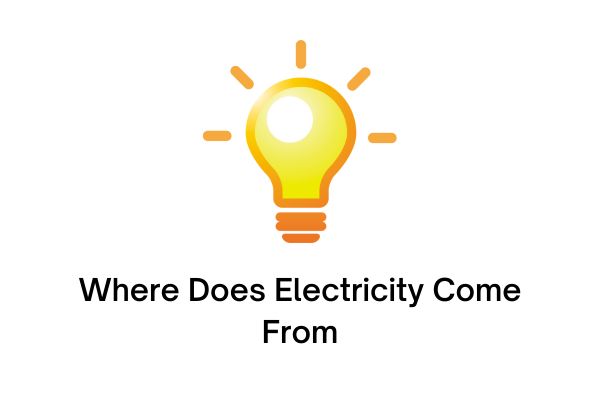Where does electricity come from? Electrical energy is the most important aspect for humans and life today. Because most household appliances require electricity.
However, there is special attention regarding electrical energy sources that can run out if used continuously. Maybe some people don’t understand this. Therefore, the following will be discussed in full.
It should be noted that energy sources in this world are divided into two types, namely renewable energy sources and limited energy sources.
The meaning can be understood below. Apart from that, below we also discuss electrical energy sources that can run out if used continuously.
Daftar Isi
Renewable Energy Sources
Renewable energy sources are natural resources that can be renewed naturally and indefinitely, such as solar energy, wind energy, water energy, biomass and geothermal energy.
One of the main advantages of renewable energy sources is that they do not produce greenhouse gas emissions or other air pollution when used, making them more environmentally friendly compared to fossil energy sources.
In addition, renewable energy sources can help reduce dependence on non-renewable and increasingly scarce fossil fuels.
Examples of renewable energy sources are:
1. Solar Energy
Sunlight, or solar light, is a fundamental aspect that provides an unlimited source of energy for our planet.
Basically, solar energy is the result of nuclear reactions in the sun’s core which produces light and heat which then spreads throughout space.
On Earth, we can utilize sunlight as an abundant source of renewable energy, both in the form of heat and electricity.
However, even though this energy source is abundant, unwise use can reduce its efficiency and availability.
For example, the use of solar energy with inefficient conversion or misuse of natural resources can threaten the sustainability of the use of solar energy.
Therefore, it is important to continue to develop technology that is more efficient and sustainable in the use of solar energy, as well as increasing solar energy storage to maintain availability over the long term.
2. Wind Energy
Wind is the result of temperature differences in the Earth’s atmosphere that cause air to move.
This air movement can be utilized to produce energy through wind turbines.
Wind turbines work by converting kinetic energy from wind into electrical energy which can be used for various purposes, from providing electricity for households to supplying energy for industry.
Even though wind as a natural energy source will not run out, excessive use of wind turbines can have a negative impact on the surrounding environment.
For example, placing wind turbines in natural habitats can disrupt local ecosystems and air flow patterns, as well as potentially destroying the habitat of surrounding fauna and flora.
3. Water Energy
Water energy is the result of the movement of water which can be used to produce electricity through hydroelectric power plants, such as dams and waterfalls.
When water flows, its kinetic energy can be converted into mechanical energy through a turbine, which is then converted into electrical energy through a generator.
Although hydroelectric power is a clean and renewable energy source, the construction of these large projects can have a negative impact on the surrounding environment.
For example, dam construction can cause changes in the ecosystem around rivers and lakes and reduce water availability in certain areas.
Therefore, it is important to carry out a comprehensive environmental impact evaluation before starting construction of a hydroelectric project, as well as adopting sustainable practices in its management.
Limited Energy Sources
Next, namely limited energy sources, these sources are limited energy sources which are natural resources that are available in limited quantities on Earth and cannot be renewed on a time scale that humans can experience.
Due to its limited nature, the use of limited energy sources is a major concern in efforts to maintain environmental sustainability and look for more sustainable energy alternatives.
An example of limited energy is as follows:
1. Coal
Coal, a fossil fuel that has been known since ancient times, is one of the main pillars in providing energy for electricity purposes.
However, it is important to realize that currently, the sustainability of its use is becoming an increasingly pressing question.
Coal reserves on earth are increasingly depleting as consumption continues to increase.
Irresponsible use and without considering energy alternatives can result in running out of this resource.
Therefore, it is important to realize that energy sustainability must be the main focus in facing the future, by looking for more sustainable and environmentally friendly alternatives.
2. Petroleum
Petroleum, like coal, has become an indisputable symbol of the power of fossil energy. However, we must not forget the limitations of this power.
The continued use of petroleum for electricity generation will not only cause a decrease in global oil reserves, but also have a significant impact on climate change.
Carbon dioxide produced from burning petroleum is one of the main causes of global warming and climate change which is increasingly worrying.
Therefore, the need to switch to cleaner and more sustainable energy sources is becoming increasingly urgent.
3. Natural Gas
Natural gas, considered a cleaner alternative to coal and oil, is also not free from limitations.
Although natural gas has lower carbon emissions than the other two fossil energy sources, its uncontrolled use can also threaten the future availability of this resource.
That is a complete discussion regarding electrical energy sources that can run out if continuously used.
With the discussion above, it is important to switch to renewable energy sources and take wiser actions in using daily electrical energy.
In order to ensure that electrical energy will remain or be available for future generations.
